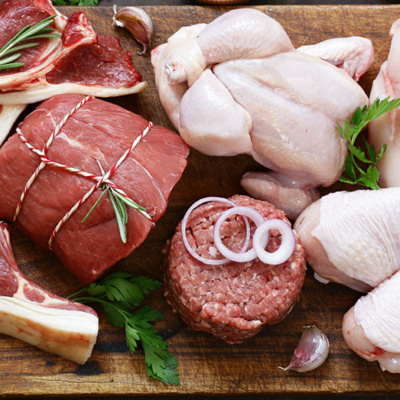top of mind news
- Fatal Storms Tear Through Nashville, Tenn., and Middle Tennessee, Destroying Restaurants and Leaving Many Without Power
- Report: Brands See Significant Impact from Lease Accounting Transition
- NY City Council Proposes Wide-Ranging Third-Party Delivery Marketplace Regulations, Including A 10% Cap On Commissions
- The 5 Not-So-Secrets of Menu Design Every Restaurateur Must Know
- Restaurant Industry Braces For Coronavirus Impact
Poultry
For the week ending February 29th chicken slaughter was up 4.5% from the year prior and leaves the six-week sum of RTC production 8% larger than 2019. Despite elevated production schedules, breast meat prices have started to rise, up near $0.06 from February, but remain well below the year prior. The wing market has been sliding, seasonally, and the market looks to put in a low ahead of March Madness deliveries. Still, given the ongoing COVID-19 fears, restaurant traffic may be tempered relative to initial expectations and wing demand may fall short of expectations. After falling sharply into late February, the leg quarters rebounded and look to head higher into spring.
Beef
Last week’s cattle harvest came in at 628k head, down slightly from the week prior but was 3% over last year. With cattle weights ballooning (more than 20 pounds over year ago levels), beef production jumped 5.6% over last year which is pressuring the USDA cutouts lower as of late. Seasonally, the beef markets usually increase by now (about two weeks overdue), while the Choice cutout has slipped 6.2% below year ago levels. The middle meats as well as chucks and briskets are failing to find any support. Spot sales of briskets are active amid prices falling 11% from a year ago. Briskets and beef 50s remain buys.
Pork
Last week’s pork production fell 2.6% from the week prior but was 5.4% more than a year ago. With overseas export markets still feeling the impacts of COVID-19, pork supplies appear to be backing up in packers’ warehouses as they wait for export interest to resurface. Wholesale pork prices remain deflated heading into the early spring, but seasonal gains are expected to reemerge in the late spring and early summer. If out-front business is occurring, anticipate the majority of the pork markets as a buy, but packers have been stingy with forward deals.
THE SEA
Seafood
Asia’s seafood imports have suffered in recent weeks due to the coronavirus induced slow economy. During January, Indian shrimp imports to China and Vietnam were down 23% from the previous year. Other countries are helping make up the difference, however, including the U.S. Thus, solid U.S. seafood imports may occur in the near term assuming no major economic disruption. This could weigh on the shrimp markets this spring. Salmon and snow crab prices are likely to be less affected.
THE GARDEN
Produce
The avocado markets are elevated, especially for larger sized product. Mexican production has been short in recent weeks. U.S. imports of avocados last week declined 15.6% from the previous week and were 12.2% less than the same week last year. Avocado prices could remain well supported at least in the near term. February 1st U.S. potato stocks were 4% less than 2019 and the smallest for the date in nine years. The Idaho potato inventory was down by 7.6% from the previous year. Limited potato supplies are likely to persist into the summer which should buoy prices.
THE KITCHEN SINK
Dairy
Last week CME spot butter prices hit the lowest level since March 2015 but have risen 10% (since then). Class III milk futures are above Class IV milk futures which can temper butter production. This factor and the historical price trend suggest that the downside price risk for butter from here will be nominal. The cheese markets have displayed some weakness in recent weeks, but block prices remain inflated for March. Stronger U.S. cheese output, due in part to bigger milk supplies plus notably cheaper EU cheese prices, could push prices lower in the near term. Yet, cheese block prices usually bottom in March.
Grains
The USDA is surveying farmers over the next few weeks regarding 2020-21 planting intentions in the U.S., and the results will be released at the end of the month. Expectations are that corn plantings could be near a record high while soybean plantings should be bigger as well. The grain markets could be erratic in the near term.
Oil
Nearby WTI crude oil futures this week were the lowest in 15-months. The continued uncertainty of the spread of coronavirus has caused many corporations to suspend travel for their employees. Crude oil prices may still decline.














